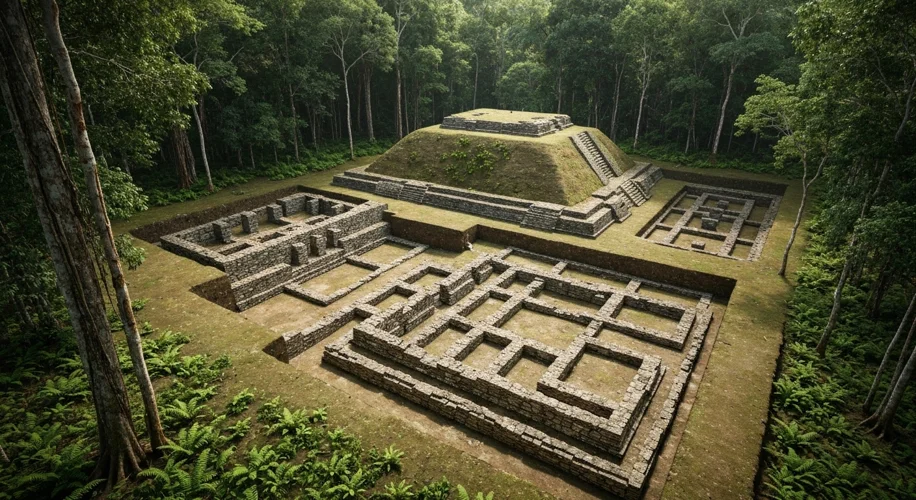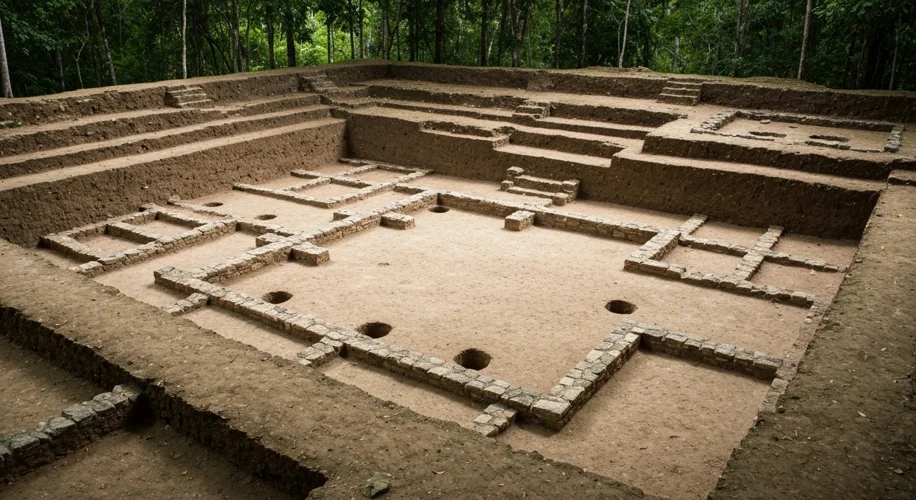The dense jungles of Belize, long thought to conceal only monumental pyramids and grand plazas, are now revealing a deeper, more intimate story of the ancient Maya. Beneath the towering temples, the Maya people lived, loved, and worked in a complex, vibrant tapestry of domestic life. For centuries, the true scale and sophistication of their urban planning and daily routines remained hidden, obscured by the very earth that preserved them. However, modern archaeology, employing innovative techniques, is finally peeling back the layers, unearthing the ‘invisible architecture’ that formed the backbone of Maya society.
At the heart of this revelation is the Ch’ok Ayin residential household group, a site that is transforming our understanding of Maya urbanism. Unlike the grand ceremonial centers that have long dominated our imagination, Ch’ok Ayin represents the everyday Maya – the farmers, artisans, and families who sustained the civilization. The work here has focused on what lies beneath the surface, not of grand stone structures, but of the subtle earthworks, plaster floors, and post-holes that once defined homes, workshops, and communal spaces.

The Maya were master planners, not just of their monumental cities, but of their very living spaces. Recent discoveries at Ch’ok Ayin have illuminated how these residential groups were not haphazard collections of huts, but carefully organized units. Researchers have identified distinct zones within these households, demarcating areas for cooking, sleeping, storage, and perhaps even ritualistic activities. The presence of multiple structures within a single compound suggests extended family units, living and working in close proximity, fostering a strong sense of community and shared responsibility. This domestic architecture, built from perishable materials like wood and thatch, has largely vanished, leaving only subtle imprints in the soil for archaeologists to decipher.
One of the most compelling insights comes from the study of the surrounding landscape, particularly areas that were once marshy or even submerged. These ‘waterlogged’ or ‘submerged’ landscapes, often dismissed as unusable, were in fact ingeniously integrated into Maya life. Far from being obstacles, these wetlands were managed and utilized, serving as sources of water, fertile agricultural land, and even as natural defenses. The Maya engineered the landscape, creating raised causeways, drainage canals, and agricultural terraces within these water-rich zones. This sophisticated environmental management allowed them to maximize their living space and agricultural output, even in challenging terrain.
Consider the humble household well, a common feature in these Maya settlements. These were not just simple holes in the ground; they were often lined with stone and surrounded by plaster, indicating a significant investment of labor and skill. They were vital for daily life, providing water for drinking, cooking, and even for the production of lime plaster, a key building material.
The Maya also understood the importance of sanitation and waste management. Evidence of middens, or refuse heaps, strategically placed away from living areas, demonstrates an awareness of hygiene. The study of these middens, filled with pottery shards, animal bones, and other discarded materials, offers invaluable clues about the Maya diet, their craftsmanship, and their daily practices. It’s a stark reminder that even the ‘waste’ of ancient civilizations tells a compelling story.
The ‘invisible architecture’ extends to the very materials used in construction. While stone dominated their public monuments, Maya homes were primarily constructed from earth and wood. Rammed earth techniques were employed to create sturdy walls, and timber posts supported thatched roofs. The post-holes, often deep and precisely placed, are the ghostly footprints of these structures, allowing archaeologists to reconstruct the layout and size of ancient dwellings. The floors, typically made of compacted earth or finished with a smooth lime plaster, also survive as crucial indicators of living spaces.
This shift in archaeological focus—from the grandeur of temples to the intricacies of domestic life—is profoundly changing our perception of the Maya. They were not solely a civilization defined by their monumental architecture and complex calendars, but by the resilient, organized, and deeply integrated lives of ordinary people. The ‘invisible architecture’ of their homes and landscapes reveals a society that was both deeply spiritual and remarkably practical, one that possessed an intimate understanding of its environment and a sophisticated approach to community living. The story of Ch’ok Ayin and sites like it reminds us that the true heart of any civilization often lies not in its most visible monuments, but in the quiet, everyday rhythms of its people, etched into the very earth beneath our feet.
As we continue to uncover these hidden structures and landscapes, the ancient Maya emerge not just as builders of stone, but as master architects of their own lives, demonstrating a remarkable capacity for adaptation, organization, and enduring human connection within the vibrant, verdant heart of their world.

